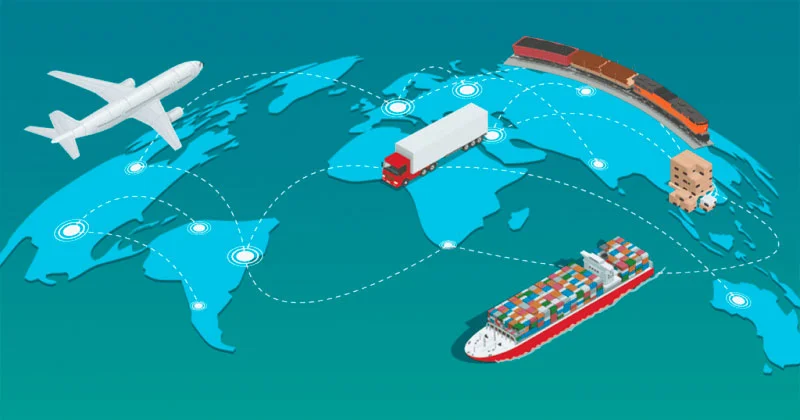Configuration Control Board Configuration Management Systems Engineering
TWGs provide the subject-matter expertise necessary to ensure that documents, the DM2, and other products under configuration control of the CCB are maintained in a responsible manner. TWGs, when tasked by the CCB, provide detailed and comprehensive technical review of proposed changes and recommendations to the CCB on action(s) to be taken that result from recommended changes. A Change Control Board (CCB), also known as the configuration ccb configuration control board control board, is a group of individuals, mostly found in software-related projects. The group is responsible for recommending or making decisions on requested changes to baselined work. A structured and consistent process for CCB meetings and reviews can help streamline the workflow and reduce the risk of errors and inconsistencies. By following such a process, changes can be managed in a timely, transparent, and traceable manner.
- When a number of changes have accumulated, the TWG recommends a new DM2 baseline version be established and released.
- A change request is a formal document that describes the proposed change, its rationale, its impact, its priority, and its dependencies.
- Additionally, decision-making techniques can help analyze, compare, and choose among different options for change requests.
- Lastly, communicating the CCB decisions clearly and promptly to all relevant stakeholders with explanations of reasons and implications will help foster trust, cooperation, and satisfaction among all involved.
- Clarifying the roles and responsibilities of each CCB member helps to avoid confusion, duplication, and delays.
When it comes to management and control of changes to services and service components, one of the biggest challenges is determining who has the authority to make change decisions. Consistent with the federated architecture approach described in Section 3, essential architectural information must be registered with DARS so that discovery of reusable architectural data can be accomplished throughout the Department. Learn how ServiceOps can help you predict change risks using service and operational data, support cross-functional collaboration to solve problems, and automatically recommend problem resolutions. In some projects the CCB may also be responsible for verifying that approved changes are implemented. These CM activities are complementary with existing DoD CM processes for the DARS, the DoD Information Technology Standards Registry (DISR), and the Metadata Registry (MDR). A more comprehensive description of the overall CM Process is found online in the DoDAF Journal.
Change control board
IT service management has long suffered from bureaucratic approaches and general risk aversion—which results in layers of approvals, development delays and confusion, and, ultimately, failure to deliver value to customers in an agile manner. This situation is exacerbated in companies with legacy systems and structures that prohibit the flexibility for change that digital transformation requires. DM2 change requests (action items) can be raised by any of the working group members or flow down from the CCB. A working copy of the DM2 is maintained, along with all reference and research materials and the current action item tracker. DM2 issues impacting the foundation are forwarded to the International Defense Enterprise Architecture Specification (IDEAS) Group for consideration.
Both permanent members of the CCB and members of all technical working groups are notified about all CCB meetings and all scheduled TWG sessions, as are the Combatant Commands and Defense Agencies.
Systems Development Executives and Managers
If you encounter difficulties in finding a laravel specialist for your startup or existing business, our team will come to the rescue! We provide outsource laravel application development services for all kinds of technical projects using cms. Our experience in this business allows us to find developers on a remote basis from Ukraine for a reasonable final price. The CAB can also meet to review previously executed changes particularly those that were unsuccessful or unauthorized, as well as plan the forward schedule of future changes particularly with regard to projected service outage and customer/business plans. Joseph is a global best practice trainer and consultant with over 14 years corporate experience. His passion is partnering with organizations around the world through training, development, adaptation, streamlining and benchmarking their strategic and operational policies and processes in line with best practice frameworks and international standards.

His specialties are IT Service Management, Business Process Reengineering, Cyber Resilience and Project Management. In these cases, an Emergency Change Advisory Board (eCAB) can be formed as a temporary subset of the routine CAB. The eCAB may include some or all individuals from the CAB, and this group will meet outside the normal schedule to review the necessary emergency change(s).
Manage conflicts and expectations
Without these components, companies will fall behind competitors who make changes quickly and safely. For example, an external CCB comprising users, developers and marketing people is formed to deal with changes that will impact the customer. An internal CCB comprising developers and technical managers is formed to deal with changes in design approaches that will not be visible to the customer or impact costs and delivery dates. Change Control Board (CCB) or Configuration Control Board (CCB), is a group of individuals within a project team or an organization for change control. CCB makes decisions as to when and if any particular changes are to be made in regards to a software product or system. Usually, if top leaders or C-suite executives sit in the CAB, then it has highest authority.

Each Architectural Description effort must establish a CM process and document it in a CM Plan. This plan is submitted when each version or update to the Architectural Description is submitted to DARS for registration and discovery. In developing CM processes for Architectural Descriptions it is recommended that best practices be adopted such as those outlined in Electronic Industries Alliance (EIA) Standard EA-649. Its flexibility lies in the ability to provide CM practices that can be selectively applied to the degree necessary for each of the areas to be covered under this plan.
Configuration Control Board
Ultimately, seeking win-win solutions that balance the needs and interests of all parties involved while maintaining the project objectives is key. Lastly, communicating the CCB decisions clearly and promptly to all relevant stakeholders with https://www.globalcloudteam.com/ explanations of reasons and implications will help foster trust, cooperation, and satisfaction among all involved. Another key to successful CCB meetings and reviews is to prepare the change requests and supporting documents in advance.
This includes measuring and monitoring how well the CCB meets its goals, objectives, and expectations, as well as identifying and implementing actions to enhance the CCB processes, practices, and outcomes. Evaluating and improving the CCB performance can help you ensure that it meets its purpose and adds value to the CM process. At every meeting, the Change Advisory Board reviews requested changes using a standard evaluation framework. That framework should consider all dimensions of the change, including service and technical components, business and customer alignment, and compliance and risk.
Evaluate and improve the CCB performance
In conclusion, using the right tools and techniques can significantly improve the quality, speed, and accuracy of CCB decisions. Factors affecting a CCB’s decision can include the project’s phase of development, budget, schedule, and quality goals. The CCB may, from time to time, establish technical working groups (TWG), as required, to oversee, review, and make recommendations to the board on specific technical aspects of the CM Program, or configuration items.

Poor change control can significantly impact the project in terms of scope, cost, time, risk, and benefits. Therefore, it is crucial that the CCB members are sufficiently equipped with information, experience, and support necessary to make the best decisions. The Change Control Board and the Change Advisory Board are similar organizational structures play vital roles in decision making. Both are comprised of teams whose role is to collectively help the organization make the right decisions of balancing need and risk of changes to technology that supports business processes, but they’re not the same. The Change Control Board will review any proposed changes from the original baseline requirements that were agreed upon with the client. If any change is agreed upon by the committee, the change is communicated to the project team and the client, and the requirement is baselined with the change.
Change management and decision making
Using appropriate tools and techniques can significantly increase the effectiveness and efficiency of CCB meetings and reviews. CM software, for example, automates and simplifies the CM tasks, such as creating, storing, tracking, and reporting change requests and CIs. It also enables collaboration between CCB members and other stakeholders, as well as providing audit trails and security features. Online platforms are another beneficial tool which allow CCB members to conduct meetings and reviews remotely with video conferencing, screen sharing, chat, and file sharing features. Additionally, decision-making techniques can help analyze, compare, and choose among different options for change requests. These techniques include criteria-based evaluation, multi-voting, and consensus – each requiring active participation from CCB members.


Leave a Reply
Want to join the discussion?Feel free to contribute!